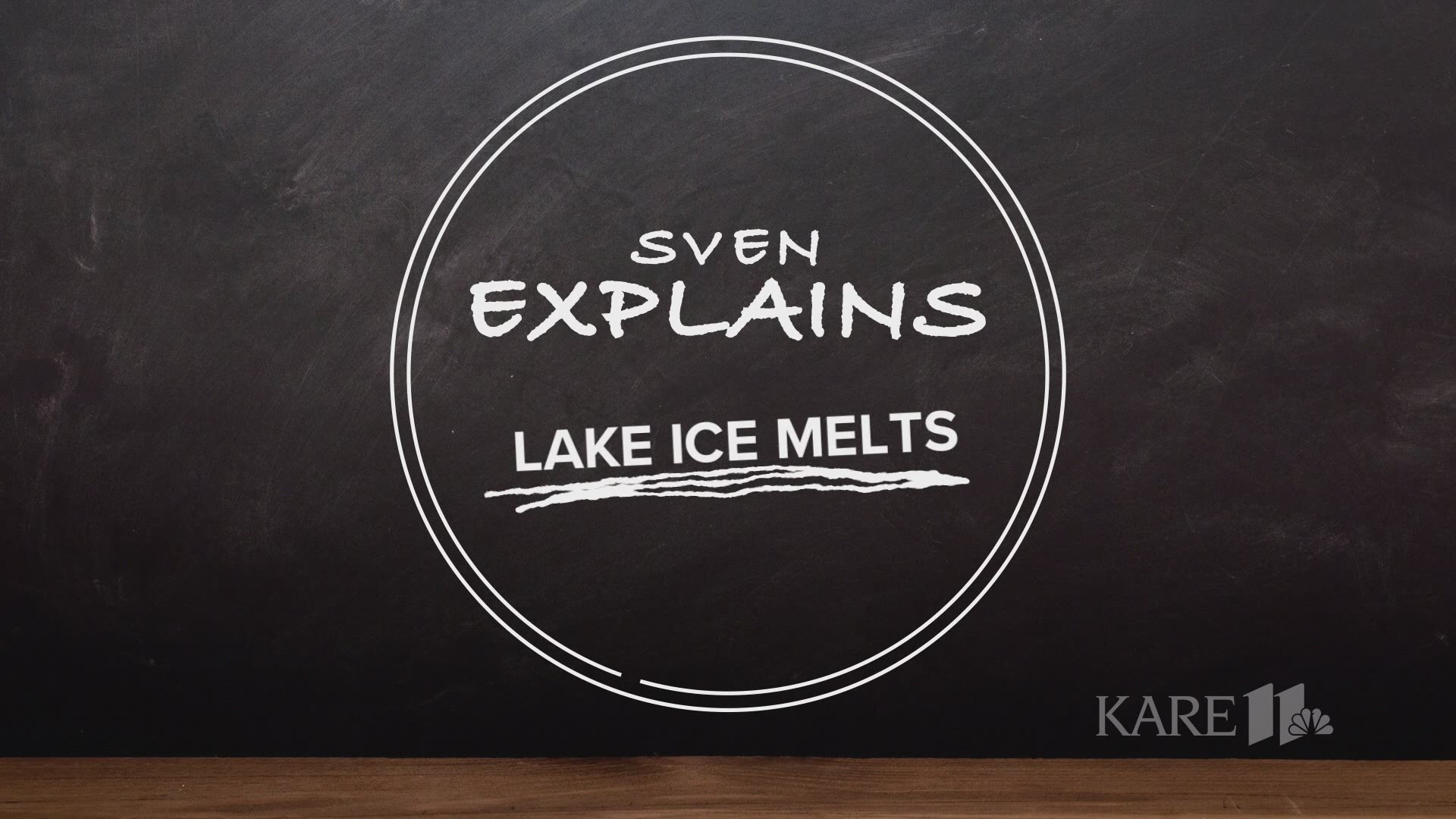There's a science to how lake ice melts. It's not just as simple as warmer temps melts ice.
The biggest single factor is the stronger sunlight as we head into March and April. The first step is melting the snow off the top of the ice. Snow cover reflects back most sunlight, keeping the ice beneath it sheltered.
Once the snow melts, the ice becomes almost like a greenhouse.
Sunlight penetrates the ice and warms the water and lake bottom beneath the ice, so now the ice is being attacked from above and below.
Once the ice gets to about 4" to 12" thickness long vertical crystals develop and hollow out. This acts like a prism absorbing more sunlight.
You can tell this by the color of the ice from above or in the distance. When the ice looks dark, that means it's absorbing light (since when it's reflecting we see white, or all the light being bounced back to our eyes).
At this stage, melt water gets into the hollow areas accelerating the melt.
The final big blow is when you get a very warm and particularly windy day. A few consecutive days in the 60s or 70s+ in early or mid April along with a strong wind breaks the ice apart, and the fragments melt quickly within the lake water.
As you've seen with our ice-out coverage, there's a lot more to ice melting on lakes than just some sun.
More from Sven Explains:

